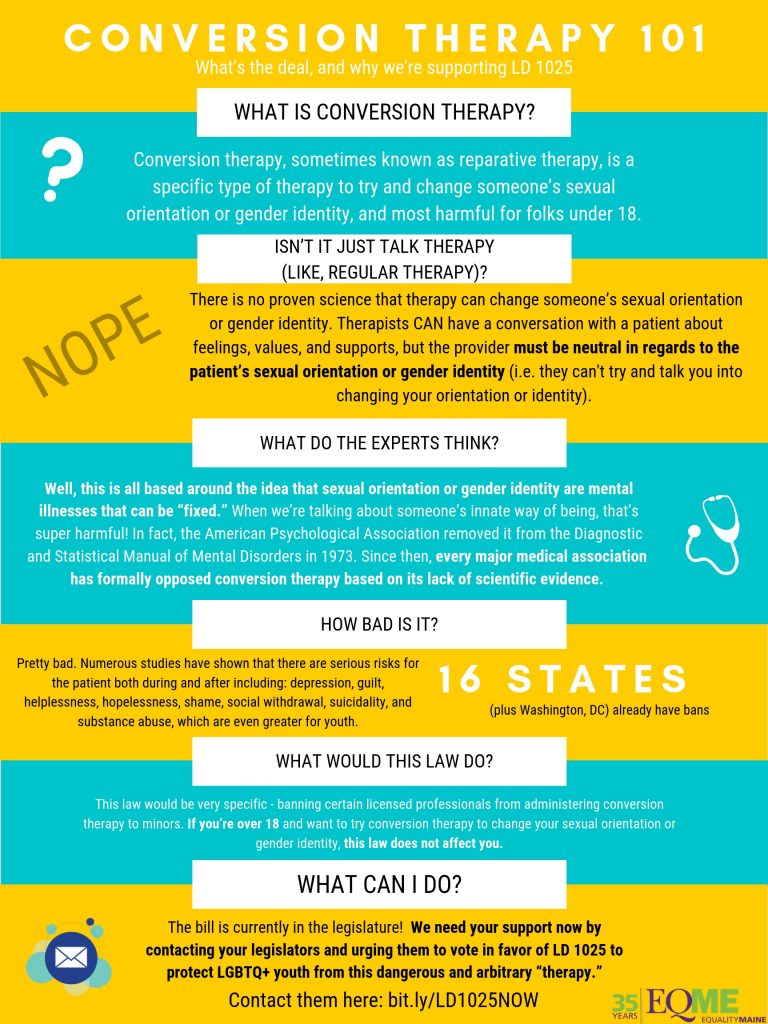Conversion Therapy
Conversion therapy is one of the many examples of pseudoscience. It involves the alteration of sexual attraction from homosexuality to heterosexuality. It is based on the belief that sexual attraction and gender identity are pathological. However, the lack of evidence to support the assumptions on which the reparative therapies are based is the major reason for discarding the health practice as pseudoscience. People misinform others about its authenticity as a scientific practice through various platforms of social media and garner support from people who are similar in perception. Conversion therapy is a health-related pseudoscience that spreads amongst like-minded persons, is connected to celebrity culture, and plays a significant role in guiding the developmental understanding of gender.
Scientific reasoning is behind the consideration of conversion therapy being part of pseudoscience. According to the American Academy of Child and Adolescent Psychiatry, there is no evidence pointing to therapeutic intervention in matters of gender identity, gender expression, and sexual orientation (Steensma & Cohen-Kettenis, 2015). It means that conversion therapy is not recognized as a viable intervention in correcting people’s sexual attractions and their gender identities. For this reason, the therapy should not be applied in correcting the behavior of people who are attracted to others of their similar sex. However, it does not mean that it is a falsified intervention that does not fit the standards of clinical care. It meets the standards of care, only that it is not a scientific practice that is usable by clinicians.
Another reasoning behind conversion therapy being pseudoscience is that it is not related to identifiable physical and mental illnesses. Differences in gender expression and identity are not pathological (Wright, Candy & King, 2018). For this reason, they are not classified amongst pathological issues in the Diagnostic and Statistical Manual of Mental Disorders. The developments of human beings towards variations in sexual orientation and gender identities are considered to be a normal occurrence amongst people of diverse genetics. For this reason, science expects to find variations in the sexual tendencies of people. Science encourages the open exploration of issues related to sexual identity, including gender expression and identity, in pursuit of healthy growth amongst the youth.
The determination to promote heterosexuality is common among people of different cultures. People, especially homophobic ones, support the promotion of heterosexuality to have what they consider to be a normal society (Aacap, 2018). Their definition of normalcy in sexual attraction is the attraction of a person to people of the opposite sex as opposed to same-sex attractions. They also seek to have a society in which people behave according to the gender constructions that guide behavior in people’s activities and interactions. These beliefs are the major drivers of the need to correct the behavior of people who do not follow the set standards (Meanley et al., 2020). It is for this reason that conversion therapy is commonplace in most societies around the world.
A word about conversion therapy is a scientific practice that spreads amongst people in diverse ways. Modern technologies support the spread of this misinformation by providing suitable platforms for its spread around the world (Pascoal et al., 2019). The most common way in which it spreads is through social media platforms. On Facebook, for example, famous people post on their timelines and in populated groups about the effectiveness of the practice. Doing so allows people access to information that they can assess and learn about the practice. Other popular social media platforms, such as Twitter and TikTok are also avenues that allow the spread of this information. Text and videos promoting the same are the most common forms in which the information is packaged. The ease of communication on social media is a factor that contributes to the fast spread of this information, with details available from people who are well-versed with the same.
A connection exists between conversion therapy and celebrity culture. People tend to follow the actions of celebrities and copy them in matters of gender identity and gender expression (Miller, 2017). For this reason, celebrities have a significant level of influence on how people behave based on their sexual orientation. Some celebrities advocate for heterosexuality. They support the idea of sexual attraction being a mutable identity. For this reason, they influence the youth towards expressing themselves according to the heterosexual standards that society has set. Advertisements done by celebrities are among the main ways in which they communicate this information.
The significance of conversion therapy is mainly manifest in the understanding of gender development. People tend to assess and treat the youth according to their understanding of how gender identities are developed (Steensma & Cohen-Kettenis, 2015). The belief that homosexuality is a wrongful sexual expression, for example, affects the way people treat homosexuals. Spreading information regarding the effectiveness of conversion therapy is, for this reason, a way of influencing how people understand the development of gender. It leads them to the search for a cure for the people whose gender identities and gender expressions are incongruent with their sexual orientation. It is due to their wrongful understanding of gender identity that they seek such solutions.
The idea of embarking on conversion therapy as the solution for homosexual behavior is a practice within pseudoscience. People tend to correct homosexuality to heterosexuality, owing to the belief that it is a pathological issue. However, scientific evidence discards this practice, since gender identity and gender expressions are not pathological issues. Conversion therapy is not a certified clinical intervention, although it meets the standards of clinical care. Social media and the actions of celebrities are among the main ways in which people spread information about the pseudoscientific practice. It is from the information that people understand how people develop in gender. Further research may offer a better understanding of this pseudoscience and its significance.







